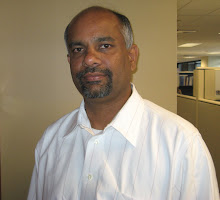I was invited to speak on a panel discussion entitled “Architecting the Enterprise” at DESRIST 2009 (a conference for design researchers) and thought I would share my thoughts on what this community thinks about Enterprise Architecture. But before we begin, what exactly is design research? Simply put, design research investigates the process of designing in all its many fields. It is not the research of the end design.
The discussion was primarily led by enterprise architects from Siemens, Pricewaterhouse Coopers, AT&T, Open Group Architecture and moderated by Penn State U. It was a useful discussion which brought forth the following:
- It continues to have a heavy technology slant with little attention being paid to the business aspect of things.
- Little or no attention is paid to the informational/data needs associated with a successful EA program.
- The academic community can help in this regard by providing a realistic definition and value of EA in both business school and computer science curricula.
- In most organizations, any senior technical architect with a good knowledge of the business is considered an EA. Why? Because he/she has the ability to understand the domain (not the business, mind you; these are two different things) and still talk technese. And then management wonders why there is no business-IT alignment.
- Most EA in most organizations probably do not know about the various architectural frameworks much less know the difference. Like I said earlier, most are techies with a sound domain (not business) knowledge.
Sobering thoughts, eh?
